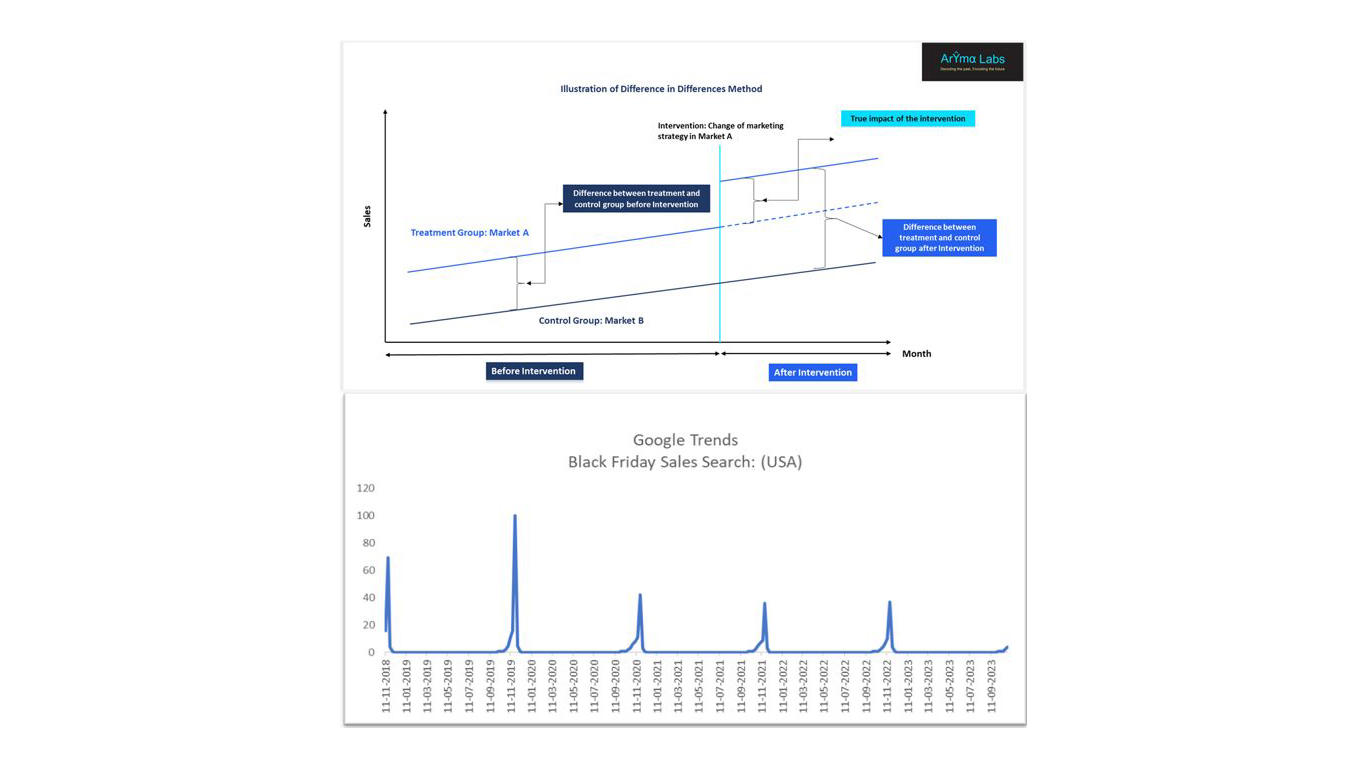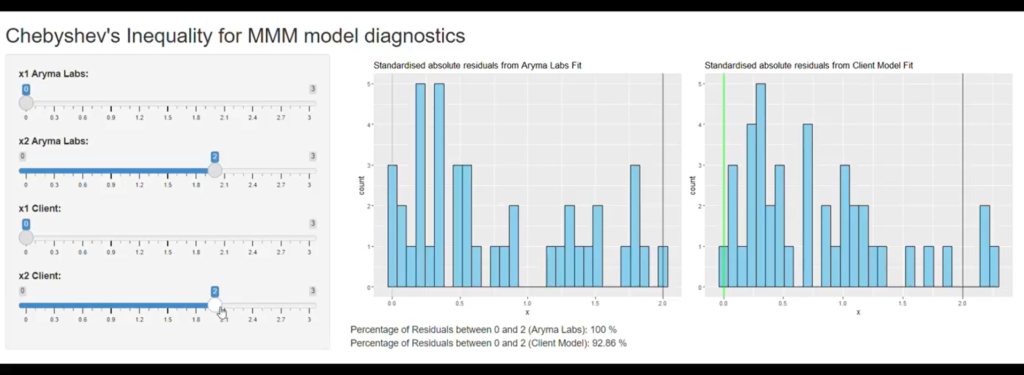During the Black Friday – Cyber Monday (BFCM) period, we often notice that brands increase their marketing spends, roll out discounts, try new media channels and launch new campaigns.
The resultant sales for some of these brands during this period is higher than any other period in the year.
But most marketers still don’t have a clear view on how to correctly attribute the incremental sales to the changes made during the BFCM.
Identifying and attributing the incremental sales is crucial because the knowledge gained could be useful for future media planning and optimization.
So is there a solution?
Yes, The solution is Difference in Difference (DID) Method.
Difference in Difference method is a quasi-experimental method. DID uses observational data. DID comes in handy when an experimental set up is not possible.
DID approach can compare similar control market with your test market and causally identify true incrementality.
Few weeks ago, we published a paper ‘Proving Efficacy of MMM through DID’ (ICYMI link in comments). In it we had taken a novel approach of considering the strategy recommendations of MMM itself to be a treatment.
Taking a leaf out of the paper, during BFCM, brands can first perform MMM to gauge the true ROI of their marketing channels.
Then brands can consider the treatment during BFCM (for e.g. 30% increased spends on YouTube ads). While keeping things as it is in the control market.
The DID approach will help causally prove that the incremental sales was due to the 30% increased spends on YouTube ads.
Similarly we could test the following changes too through DID:
1. Increase spends on a particular platform (e.g. FB, YouTube, TikTok) in the test market and compare with control market. This helps in identifying effectiveness of the platform.
2. Increase spends on certain types of creatives in the test market and compare with the control market. This helps in identifying effectiveness of certain creatives.
We are currently helping few brands adopt MMM + DID to amp up their incrementality testing.
Reach out to us to know more.




